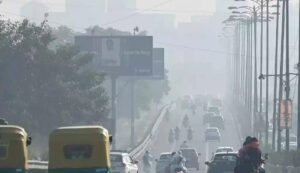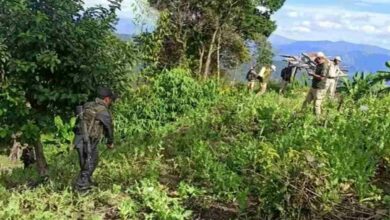Air quality in Delhi in ‘severe’ and ‘very poor’ category, citizens complain of deteriorating health
New Delhi: The national capital’s air quality had been in the “severe” and “severe plus” categories for the previous several days, but on Thursday, it improved marginally, dropping into the “very poor” category with a thin layer of haze making it harder to see in certain areas of Delhi.

As of 8 a.m. on Thursday, the Central Pollution Control Board (CPCB) reported that Delhi’s Air Quality Index (AQI) was 379, which is classified as “very poor.”
The AQI at Chandani Chowk was 338 as of 8 am, IGI Airport (T3) was 370, ITO was 355, Jawaharlal Nehru Stadium was 354, RK Puram was 387, Okhla Phase 2 was 370, Patparganj was 381, Sonia Vihar was 394, and Aya Nagar was 359, all of which were classified as “very poor” based on the CPCB’s statistics.
However, a number of locations in Delhi remain within the “severe” category of air pollution, with AQIs of 405 in Anand Vihar, 414 in Ashok Vihar, 418 in Bawana, 401 in Dwarka Sector-8, 413 in Mundka, and 436 in Wazirpur.
The region’s rail operations have been impacted by this circumstance, with many trains experiencing delays or being rescheduled.
While images from Connaught Place, AIIMS, and Dhuala Kuan depict the region covered in a layer of fog that reduces visibility, images from the Kartavya Path show individuals going about their daily routines of running and exercising despite the heightened pollution.
One of the travelers to India, Justin, told media report, “I’m from the USA, and this is my second day in India. Despite the warnings of’smog’ and pollution from my Indian friends before I arrived, I still wanted to see New Delhi since it’s a beautiful city with a rich history.So I came here.I’m hoping Delhi will get over its pollution problem quickly.
Since the pollution is interfering with their everyday lives and negatively impacting their health, the locals called on the government to take action to stop it.
“Delhi Government should take a major step to control the pollution as it affects us and create problems when we go for a morning walk,” a senior citizen stated.
According to Mahaveer Kumar, “Pollution has significantly grown. The pollution level wasn’t this much greater before. The government’s failure to take action to reduce pollution is the issue. People are suffering, our health is becoming worse, and kids are unable to attend school or college. The government has temporarily switched from a traditional classroom setting to an online one, but how long will this last? The government need to do something about this.
For the last several days, toxic foam has remained on the Yamuna River’s surface in the Kalindi Kunj neighborhood due to the river’s persistently high pollution level.
As winter gradually arrived, a thin layer of fog also enveloped Agra’s famous Taj Mahal; nonetheless, the city’s air quality remained in the “moderate” category, according to the CPCB.
On Thursday morning, a layer of haze also covered the city of Moradabad.
In response to increasing air pollution levels, Delhi Police earlier on Wednesday ordered social media and e-commerce sites to immediately stop selling and delivering firecrackers online in the National Capital Territory (NCT).
An official statement claims that the order aims to stop the selling of firecrackers on e-commerce sites and directly safeguard residents’ health and well-being from rising pollution.
Given the worsening air quality in the nation’s capital, the Delhi government declared that all government offices under the Delhi Government and Municipal Corporation of Delhi would only employ 50% of their workforce, with the remaining 50% working from home.
The Commission for Air Quality Management (CAQM) implemented Stage-IV of the Graded Response Action Plan (GRAP) in response to the increasing pollution levels. This included halting public construction projects and prohibiting truck access.





